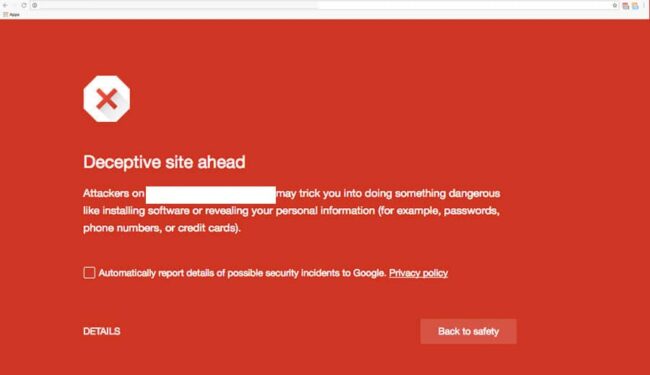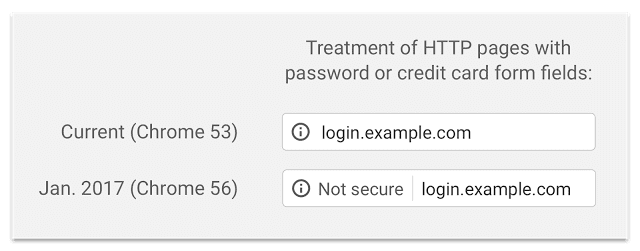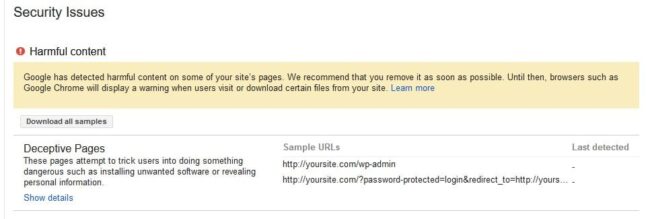We submit hundreds of blacklist review requests every day after cleaning our clients’ websites. Google’s Deceptive Content warning applies when Google detects dangerous code that attempts to trick users into revealing sensitive information.
For the past couple of months we have noticed that the number of websites blacklisted with Deceptive Content warnings has increased for no apparent reason. The sites were clean, and there was no external resources loading on the website.
Recently, we discovered a few cases where Google removed the Deceptive Content warning only after SSL was enabled. We conducted the following research in collaboration with Unmask Parasites.
What is an SSL Certificate?
Most websites use the familiar HTTP protocol. Those that install an SSL/TLS certificate can use HTTPS instead. SSL/TLS is a cryptographic protocol used to encrypt data while it travels across the internet between computers and servers. This includes downloads, uploads, submitting forms on web pages, and viewing website content.
SSL doesn’t keep your website safe from hackers, rather it protects your visitor’s data.
To the average visitor, SSL is what’s behind the green padlock icon in the browser address bar. This icon signifies that communication is secure between the visitor and the web server, and any information sent or received is kept safe from prying eyes.
Without SSL, an HTTP site can only transfer information “in the clear”. Therefore, bad actors can snoop on network traffic and steal sensitive user input such as passwords and credit card numbers.
The problem is that many visitors don’t notice when SSL is missing on a website.
Google Moves on HTTP/HTTPS
We have seen Google pushing SSL as a best practice standard across the web. Not only are they rewarding sites that use HTTPS, it seems they are steadily cracking down on HTTP sites that should be using HTTPS.
- In 2014, Google confirmed HTTPS helps websites rank higher in their search engine results.
- In January 2017, they rolled out the Not Secure label in Chrome whenever a non-HTTP website handled credit cards or passwords.
- Google also announced they would eventually apply the label to all HTTP pages in Chrome, and make the label more obvious:
- There has been a lot of talk about how to promote SSL and warn users when browsing HTTP sites.
Studies show that users do not perceive the lack of a “secure” icon as a warning, but also become blind to warnings that occur too frequently. Our plan to label HTTP sites clearly and accurately as non-secure will take place in gradual steps, based on increasingly stringent criteria. Source: Google Security Blog
Perhaps the red triangle warning has not been as effective, and they could be working on even stronger labels through their SafeBrowsing diagnostics.
Blocking Dangerous HTTP Input
In a few recent cases, we had Google review a cleaned website twice over a couple of days, but the requests were denied.
Once we enabled SSL, we asked again and they cleared it. Nothing else was changed. We dug further and uncovered a few more cases where this behavior had been replicated.
Upon investigation, the websites contained login pages or password input fields that were not being delivered over HTTPS. This could mean that Google is expanding its definition of phishing and deception to include websites that cause users to enter sensitive information over HTTP.
We don’t know what Google looks for exactly to make their determination, but it’s safe to assume they look for forms that take passwords by just looking for input type=”password” in the source code of the website when that specific page is not being served over HTTPS.
Here’s an example from the Security Issues section of Google Search Console showing messages related to Harmful Content:
We see that the WordPress admin area is blocked, as well as a password-protected page. Both URLs start by HTTP, indicating the SSL is missing. Both pages have some form of login requirement.
Most of these sites were previously hacked, and these warnings remained after the cleanup had been completed. There were a few, however, where there was no previous compromise. In each case, enabling SSL did the trick.
As the largest search engine in the world, Google has the power to reduce your traffic by 95% with their blacklist warnings. By blocking sites that should be using HTTP, Google can protect its users and send a clear message to the webmaster.
Domain Age a Factor
There seems to be another similar factor among the affected websites.
Most appear to be recently registered domains, and as such, they did not have time to build a reputation and authority with Google. This could be another factor that Google takes into account when assessing the danger level of a particular website.
Some websites were not even a month old, had no malware, and were blacklisted until we enabled SSL.
Google Ranking and Malware Detection
One of the many factors involved in how Google rates a website is how long the site has been registered. Websites with WHOIS records dating back several years gain a certain level of authority.
Google’s scanning engines also help limit our exposure to dangerous websites. Phishing attacks often use newly-registered domains until they are blacklisted. New sites need time to develop a reputation.
An older website that never had any security incidents is less likely to have any false positive assessment, while a new website won’t have this trust. As soon as Google sees a public page asking for credentials that are not secured by HTTPS, they take a precautionary action against that domain.
HTTP As a Blacklist Signal
Google has been slowly cracking down on HTTP sites that transfer sensitive information and may be starting to label them as potential phishing sites when they have a poor reputation.
While Google has not confirmed that SSL is a factor in reviewing blacklist warnings, it makes sense. Google can ultimately keep their user’s browsing experience as safe as possible, and educate webmasters effectively by blocking sites that don’t protect the transmission of passwords and credit card numbers.
Password handling is a big security concern. Every day there are cases of mishandled passwords, so it’s understandable that Google is testing their power in changing the tides and keeping users safe.
Conclusion
Keeping the communication on your website secure is important if you transmit any sensitive user input. We created a guide on how to install a free SSL certificate on your website and learn more about how it works.
Enabling SSL on your website is a wise decision. Thankfully this has become an easier process in recent years, with many hosts encouraging and streamlining the adoption of SSL. Let’s Encrypt came out of beta over a year ago, and has grown to over 40 million active domains.
If you have a relatively new website and want to ensure that Google does not blacklist you for accepting form data, be sure to get SSL enabled on your website. We offer a free Lets’s Encrypt SSL certificate with all our firewall packages and are happy to help you get started.












